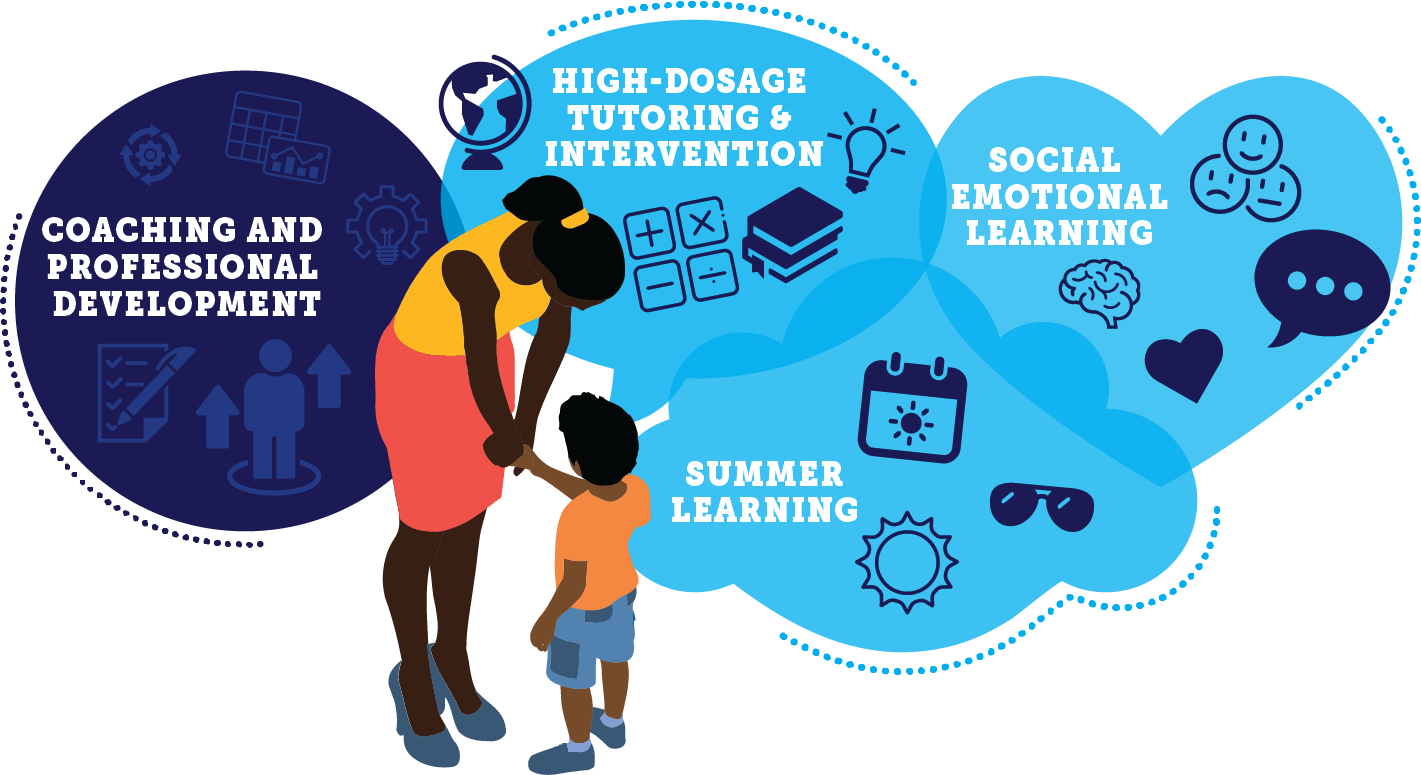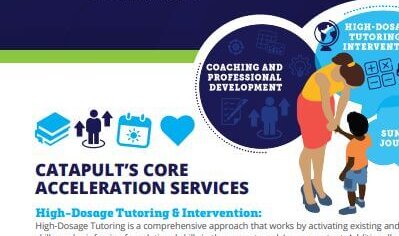Bridging Learning Gaps and Achieving Positive Student Outcomes
Catapult Learning’s Accelerated Learning is designed to meet the academic and needs of your students, families and school communities. Our Accelerated Learning prioritizes essential prerequisite skills and knowledge and reinforces key foundation skills that allow students to activate existing and relevant knowledge when working on grade-level studies.
Our anytime, anywhere approach to implementation means we can deliver in-person, virtual, or hybrid services that can support your school community now, during the summer, and throughout the school year.
Coaching and Professional Development

Our research-based, holistic approach to professional development helps educators cultivate optimal learning environments. To help schools address a range of academic challenges—including student behavioral issues, classroom management gaps, and leadership development—we offer a comprehensive training program backed by decades of experience as educators and coaches.
Executive Function and Resiliency

Catapult Learning’s Executive Function and Resiliency is based on the understanding that the best learning emerges as a result of supportive relationships that make learning challenging, engaging, and meaningful. Our programs, with focuses on Counseling, Family Engagement, and Professional Development, expand students’ 21st-century skills in critical thinking, collaboration, creativity, and empathy—all necessary for success in college, careers, and beyond.
High-Dosage Tutoring & Intervention

High-Dosage Tutoring is a comprehensive approach that works by activating existing and relevant knowledge, building prerequisite skills, and reinforcing foundational skills in the current grade’s core content. Additionally, our math and reading/literacy intervention programs help struggling learners regain their confidence through intensive, small-group instruction. Combined, our High-Dosage Tutoring and intervention programs can result in more than one year’s worth of academic progress in less than one full school year.
Summer Learning

Our turnkey K-12 Summer Journey program—designed to prepare students for the fall—offers a comprehensive suite of programs, educational opportunities, and engaging activities that can be tailored to address the specific academic and emotional needs of your students and their families…all while having fun.
More Resources
Latest Webinar
Contact Us to Learn More





